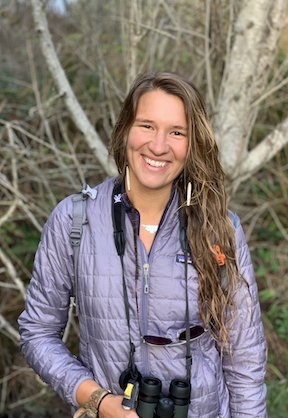Hanover Bald Eagle Blog # 2 - 2021
In partnership with Comcast Business and Pennsylvania Game Commission .

AS WE STEP EAGERLY INTO THE NEW YEAR AND OPEN OUR 2021 PLANNERS, IT’S WORTH REMEMBERING THAT BALD EAGLES FOLLOW A DIFFERENT SCHEDULE THAN WE DO. THEIR CALENDARS ARE INTERNAL, AND RATHER THAN ABIDING BY SOCIETAL MARKERS LIKE DAYLIGHT SAVINGS TIME, SOLSTICE CELEBRATIONS, OR FESTIVE COUNTDOWNS, EAGLES RESPOND TO A COMBINATION OF INTERNAL AND EXTERNAL CUES. MANY OF THESE RELATE TO THEIR BREEDING BIOLOGY.
Below is a chart compiled by the Fish & Wildlife service that visually presents the breeding chronology for different bald eagle populations across North America. TheHanover eagles are considered part of the Chesapeake Bay Region.

For those of you who are seasoned observers, you’ll notice that the Hanover pair usually mirrors this chart, beginning nest renovations in late fall and fledging young towards the end of July.
This year, we can expect breeding milestones such as copulation, lay date, hatch date, and fledging date to take place within similar time frames. However, as with all beautiful wild things, anything can happen: Weather, body condition, and inter-species competition are just a few factors that can influence an eagle’s preparedness for raising young, and therefore, no two breeding seasons are ever the same.
For a reminder of when to expect the typical milestones, let’s revisit past years at the Hanover nest: In 2017, the Hanover pair laid their first egg on February 10th; in 2018 it was February 20th; and in 2019 it was February 13th. On average, the second egg followed three days after the first. This means that we can look to February as “egg month,” and pay extra attention to the nest bole whenever the female stands up. Copulation occurs 5-10 days before the first egg is laid, meaning that towards the end of this month, we should start keeping our eyes peeled for copulation at the nest. Keep in mind, however, that copulation is more likely to occur on a branch near the nest, out of the webcam’s sight.
Last year both eggs failed to hatch for unverified reasons. To learn more about the reasons why bald eagle nests sometimes fail, revisitBlog #8https://new.hdontap.com/pages/blog/hanover-blog-season-2019/hanover-bald-eagle-blog-32/from 2020. This year, we are hopeful the nest will succeed and that we will meet two fuzzy hatchlings sometime in April, or roughly 35 days after the eggs are laid. In 2019, the last successful year for the Hanover nest, the first egg hatched on April 4th.
Hatchlings are born virtually naked and unable to do much except rock back and forth, act ridiculously adorable, and accept food from their parents. They gradually mature through various stages of development inside the nest, learning the ropes of being an eagle and growing into strong, agile juveniles. After 50-80 days inside the nest, young eagles take their first flight. In 2019, the two Hanover eaglets fledged after 76 and 85 days in the nest, respectively. For a recap on the breeding chronology at the Hanover home in 2019, re-visit Blog #32.
In summary, here is a potential chronology for this year’s breeding season, if (and remember, this is a big IF), the Hanover eagles stay true to their previous breeding history:
- We can expect copulation to occur between the end of January and the middle of February.
- We can expect egg laying 5-10 days after copulation, or sometime in February.
- The eggs are likely to hatch in late March or early April.
- The chicks are likely to fledge 50-80 days after hatching, or the second half of July.
SOURCES
National Bald Eagle Management Guidelines. U.S. Fish and Wildlife Service, May 2007, https://www.fws.gov/pacific/ecoservices/documents/NationalBaldEagleManagementGuidelines.pdf. Accessed 8 January 2021.
ATTENTION HANOVER EAGLE VIEWERS - We recognize that over the years this bald eagle pair has been named by the public and is commonly referred to as "Freedom" and "Liberty". While we understand that naming the eagles helps connect and distinguish the female from the male eagle, naming the pair introduces an element of domesticity to wild animals. In order to respect the eagles and focus on their natural history, we will refer to the female and male as such as per recommendations of the Pennsylvania Game Commission.

RETURN TO HANOVER BALD EAGLE BLOGS
WATCH THE HANOVER BALD EAGLE LIVE CAMS
For over 20 years, HDOnTap has provided live streaming solutions to resorts, amusement parks, wildlife refuges and more. In addition to maintaining a network of over 400 live webcams, HDOnTap specializes in design and installation of remote, off-grid and otherwise challenging live streaming solutions. Contact press@hdontap.com for all media needs, including images and recordings.

